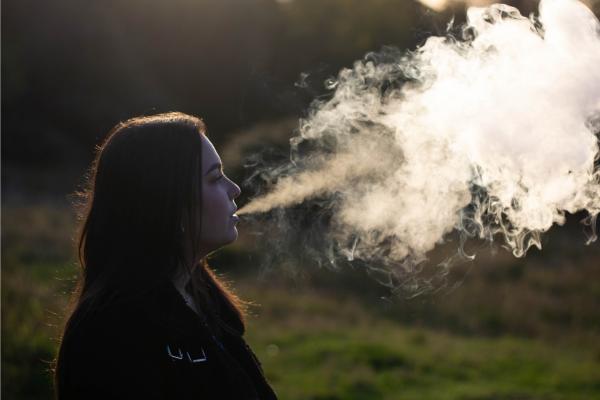More good news from the world of public health: teen vaping continues its steady decline, according to the latest results from the CDC's National Youth Tobacco Survey (NYTS). Just 9.4 percent of middle- and high-school students reported “current use” of vaping products. Media coverage of the survey has stressed that single statistic and the absolute number of adolescents who vape, 2.5 million individuals. Because the CDC defines “current” vaping “as use on ≥1 day during the past 30 days,” these figures are somewhat misleading.
Just 27.6 percent of these students (700,000 in total) reported vaping every day. Segmenting the rest of the survey population into groups based on how many days they vaped, the CDC found that “42.3% reported using e-cigarettes frequently [on 20-30 days], including 46.0% of high school students and 20.8% of middle school students.” As Filter's Alex Norcia reported on October 6, frequent and daily teen vaping are remarkably low when calculated as percentages of the total number of students in the US:
That breaks down to 6.49 percent of all high schoolers surveyed using “frequently,” and just 0.69 percent of all middle schoolers doing so. For daily use, it works out at 4.24 of all high schoolers and 0.39 percent of all middle schoolers. These versions of the numbers seem rather less dramatic than the ones the CDC is emphasizing.
So, teen vaping is on its way down, and teen smoking is below two percent for both middle- and high-school students. A recent survey from the UK reported similarly insignificant numbers, as have multiple studies we've reported on previously. We can draw two encouraging conclusions from these results. First, vaping is no “gateway” to smoking. Second, the vape industry has clearly failed to “hook” children on their flavored products, again, as previous research has shown. [1]
The hyperventilating begins
Unfortunately, the public health establishment wasn't pleased with the latest NYTS results. “The FDA remains deeply concerned about e-cigarette use among our nation’s youth,” said agency commissioner Dr. Robert Califf. “We cannot and will not let our guard down on this issue. The FDA remains steadfast in its commitment to using the full range of our authorities to address youth e-cigarette use head-on.” Not to be outdone, the CDC was even more displeased with its survey results:
“This study shows that our nation’s youth continue to be enticed and hooked by an expanding variety of e-cigarette brands delivering flavored nicotine,” said Deirdre Lawrence Kittner, director of the CDC’s Office on Smoking and Health, in a statement. “Our work is far from over.”
When does the "epidemic" end?
During a recent Zoom call not intended for public consumption, two CDC officials even used the survey results to complain about the ongoing teen vaping “epidemic”:
When the discussion portion began, Reason Foundation's @gbentley1 took CDC’s deceitful pitch about an “epidemic” and sent it into the upper deck with one simple question. Here is the video we obtained.
pic.twitter.com/m5OEy755kh
— American Vapor Manufacturers (@VaporAmerican) October 7, 2022
Spoiler alert: Bentley asked how low teen vaping would have to drop before the CDC would declare the end of the "epidemic." The agency official refused to give a number, though she said teen vaping should be eliminated. Everybody shares that sentiment, of course, but why does teen vaping have to be an epidemic or non-existent? We treat no other public health issue with such stark contrast.
It gets better, though. The CDC warned that there were some methodological differences between the 2022 NYTS and previous waves of the survey; comparing the new results to those from the earlier years may be misleading, the agency noted:
Because of changes in methodology, including differences in survey administration and data collection procedures, the ability to compare estimates from 2022 with those from previous NYTS waves is limited …
Here's where things stand, then. Taking all the NYTS results into account clearly reveals a downward trend in teen vaping; independent experts have said this is a reasonable conclusion despite the methodological differences between surveys. Nevertheless, CDC officials have ignored the decline and declared teen vaping an epidemic based on the 2022 results alone.
How blessed we are to have such science-minded public servants watching out for our health.
[1] Aside from a few bad actors, there's no evidence that the vaping industry has collectively targeted children. I address the issue in detail here.




